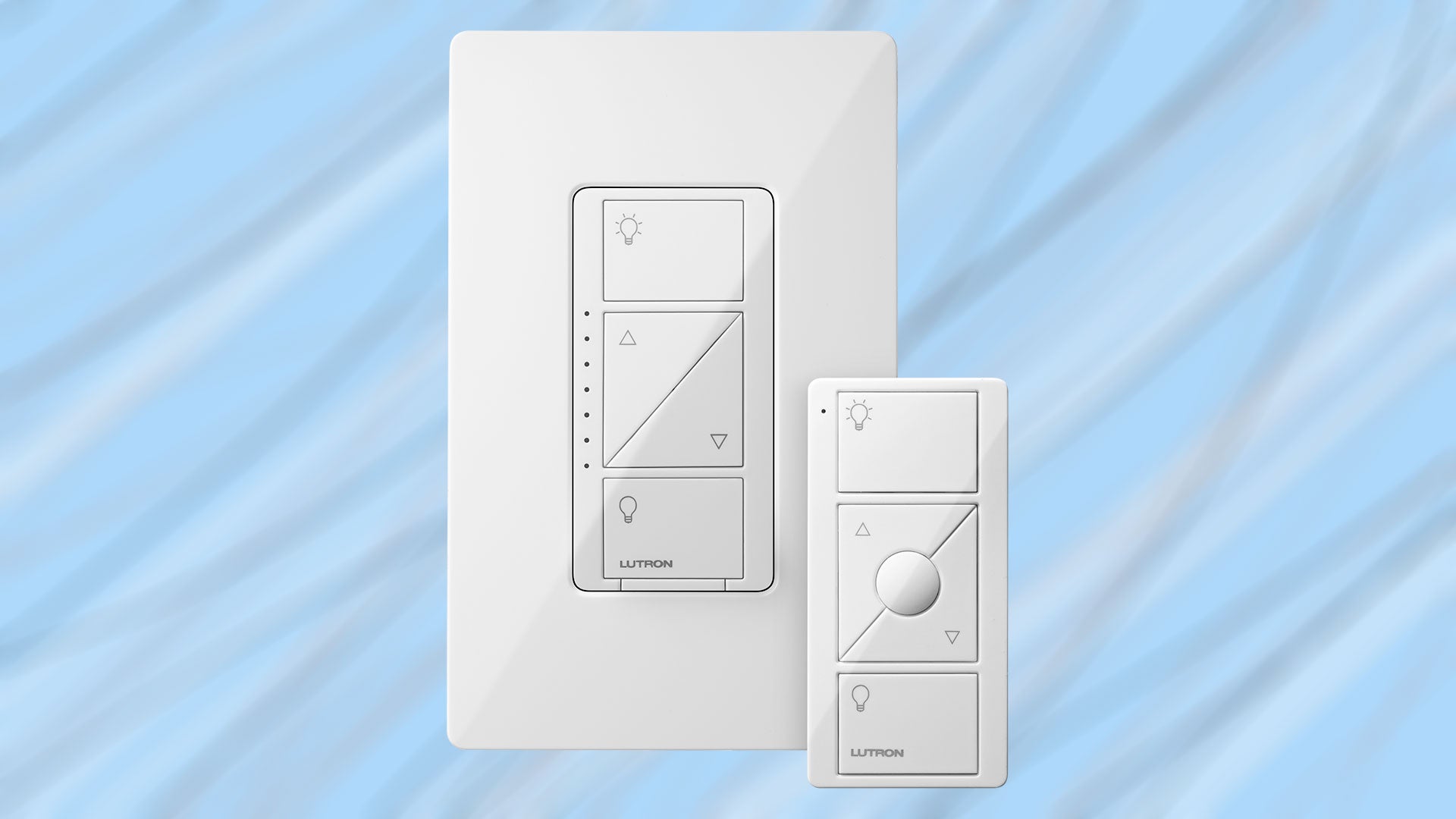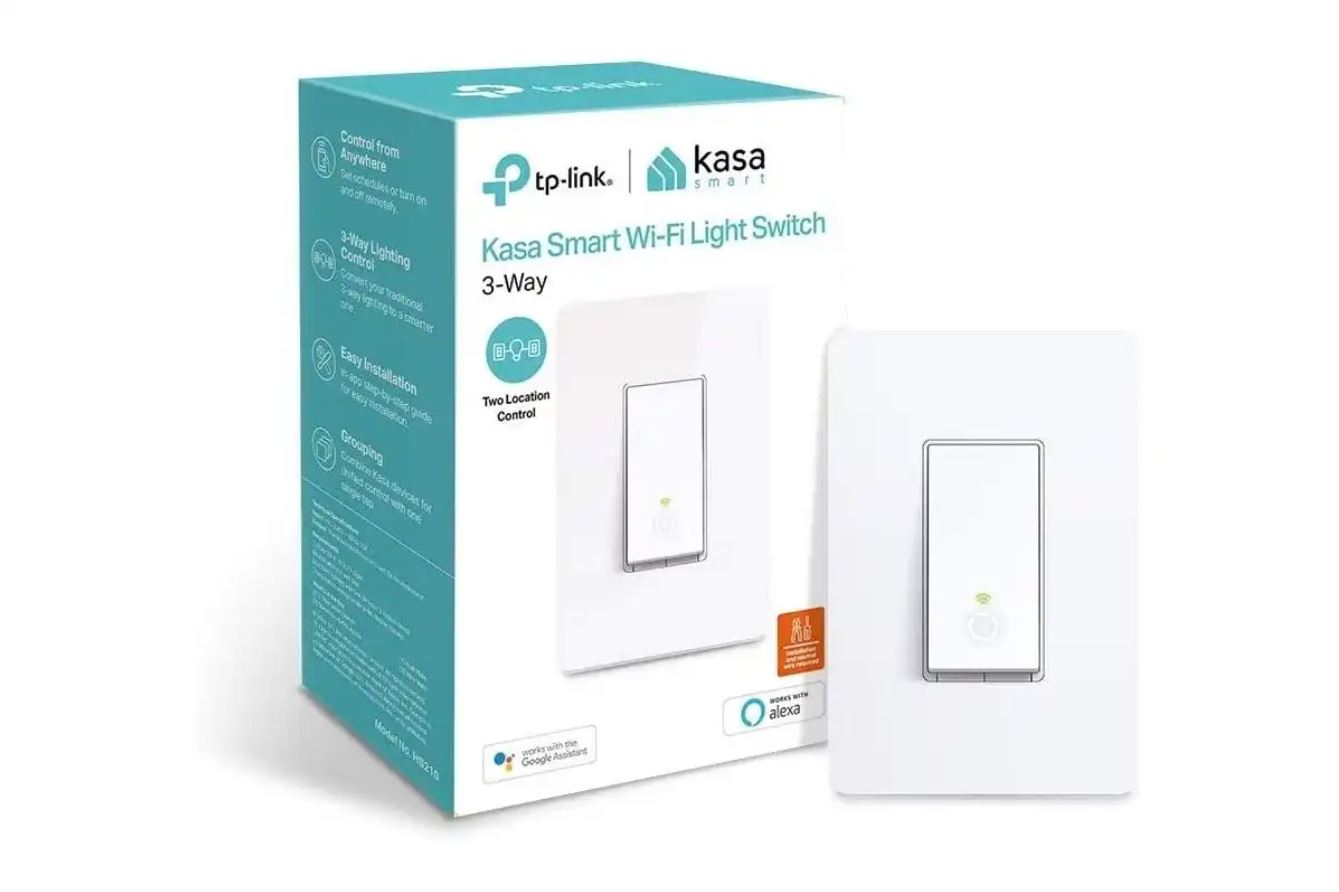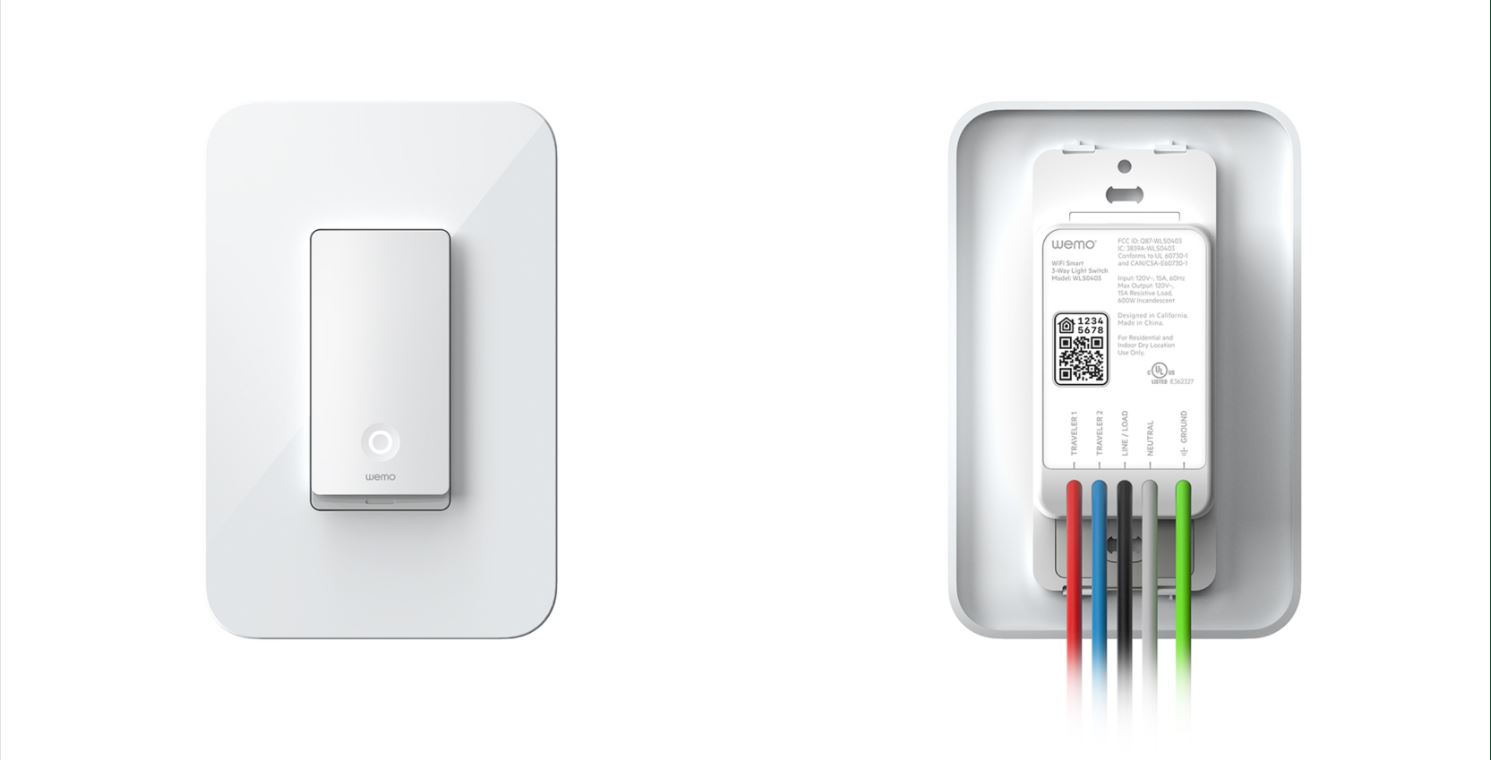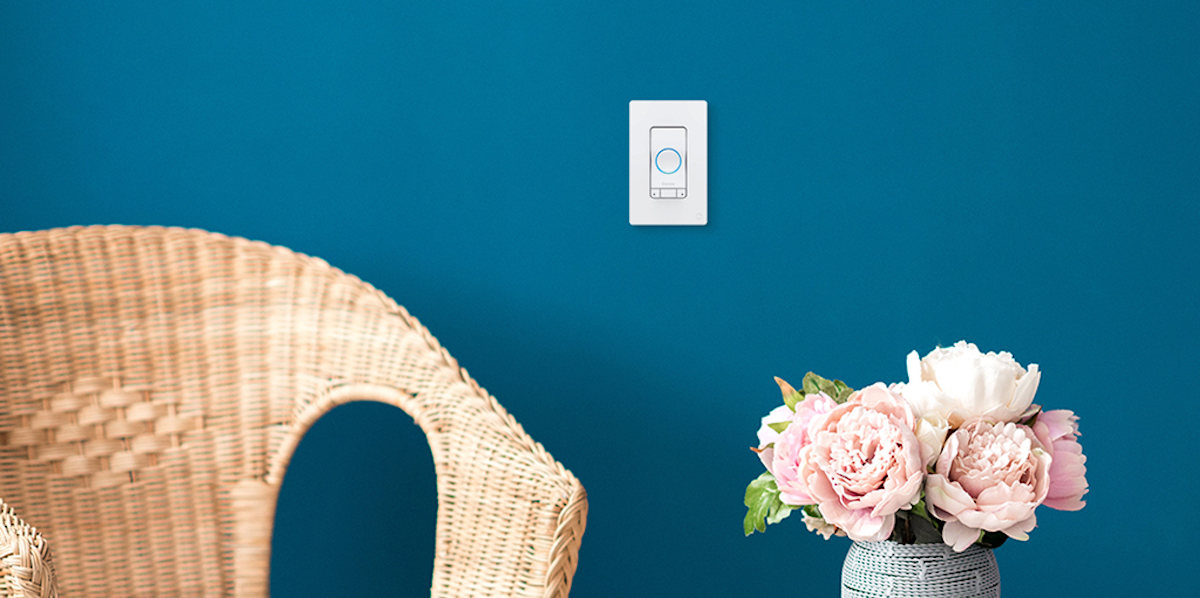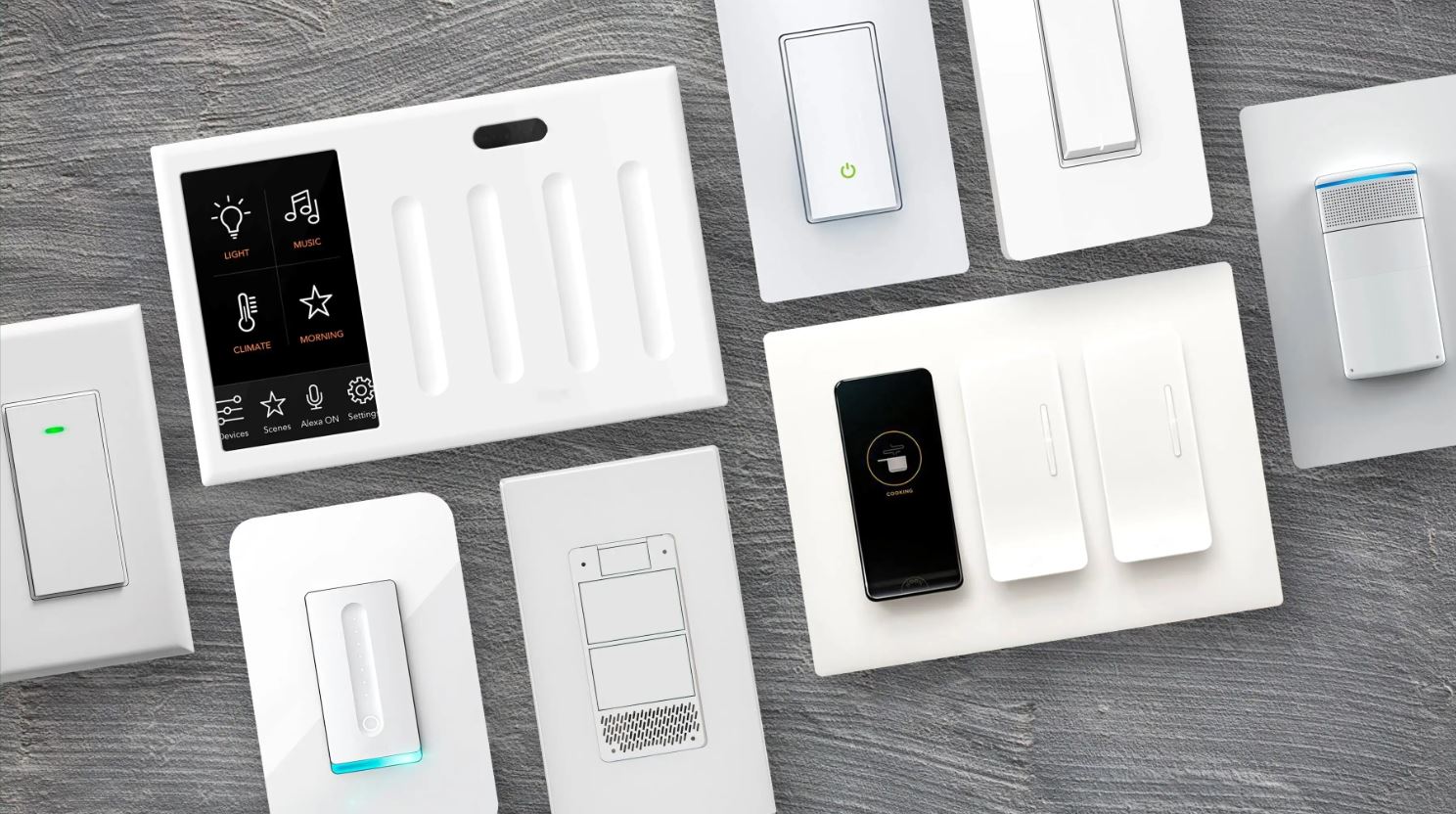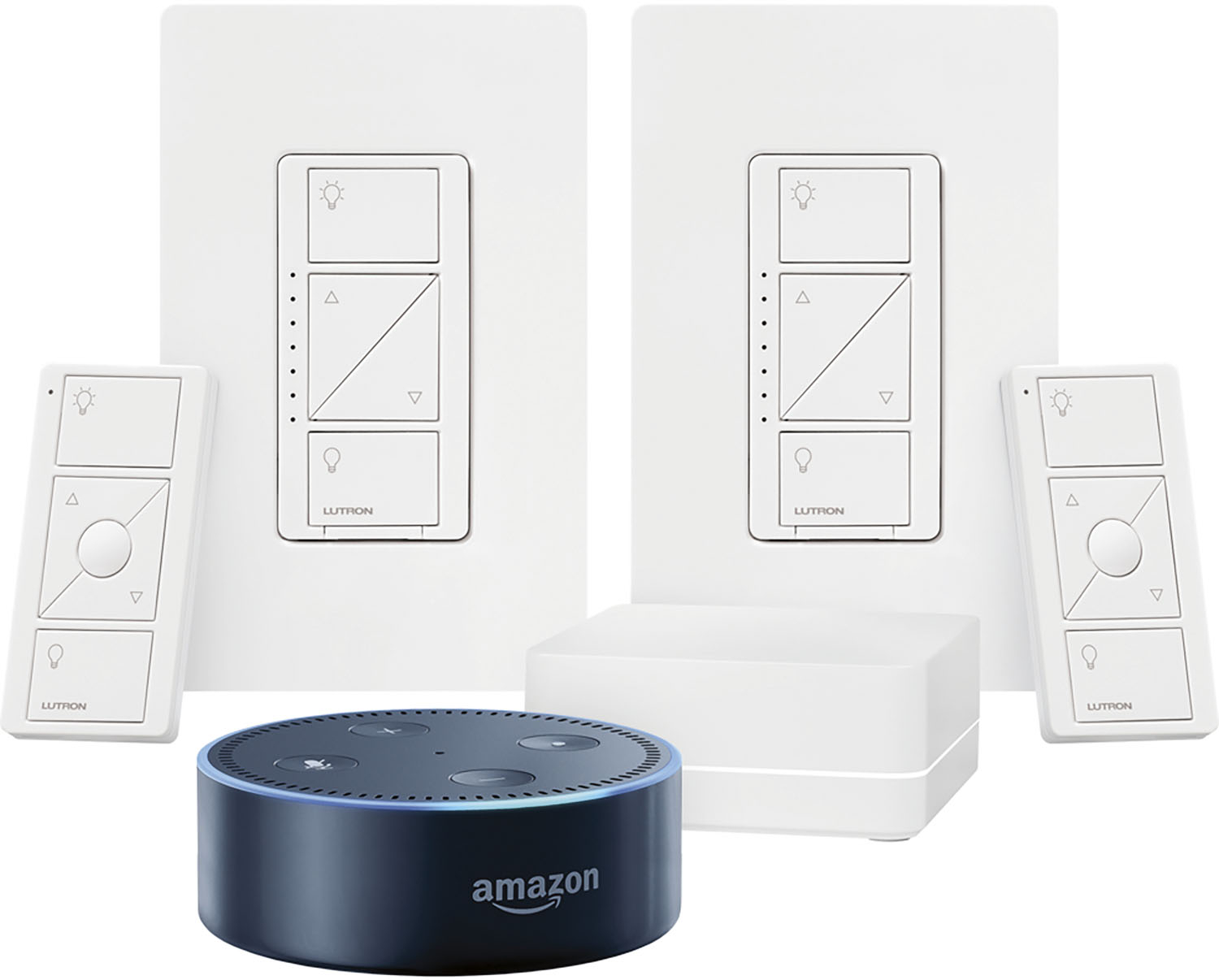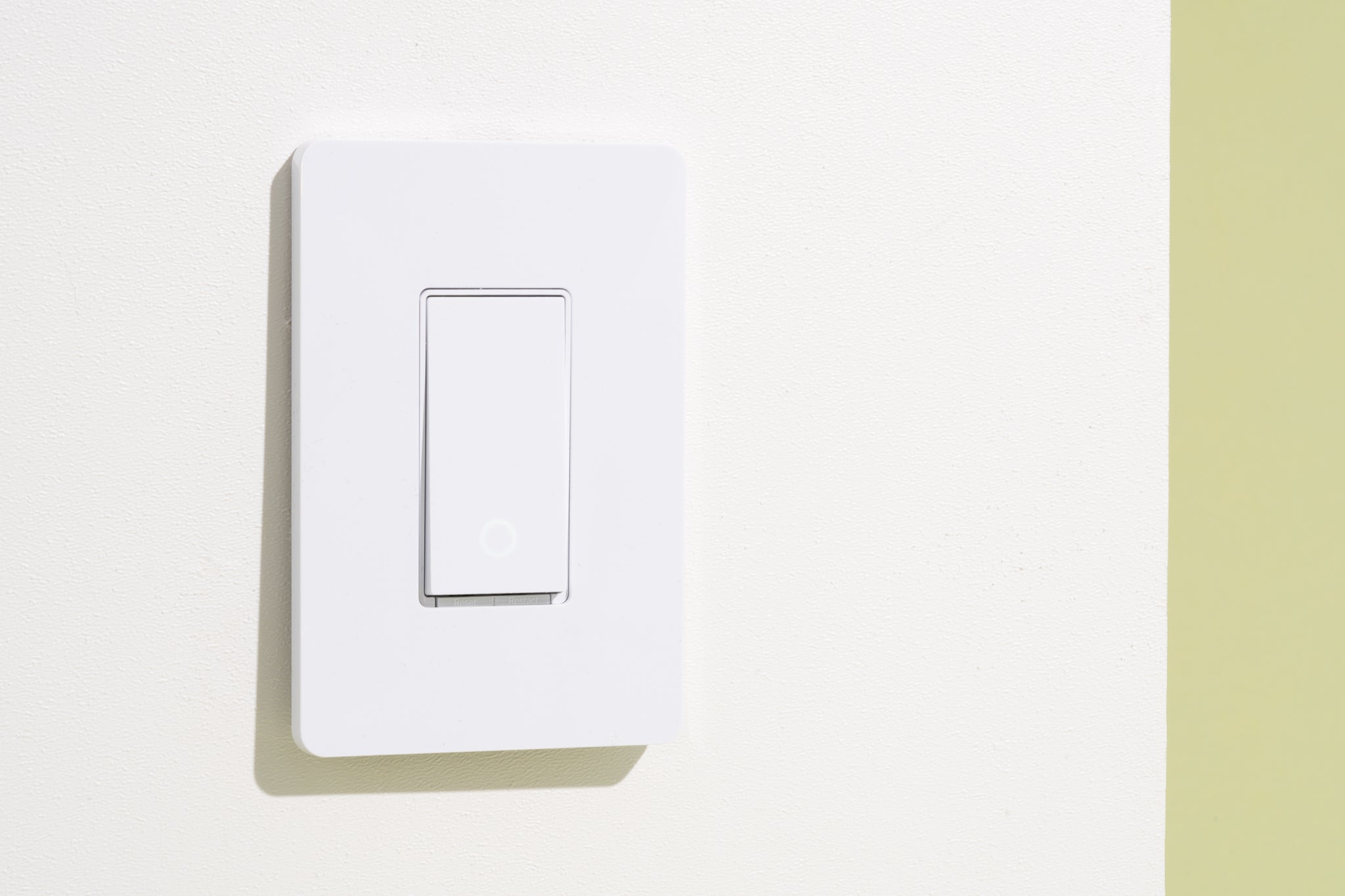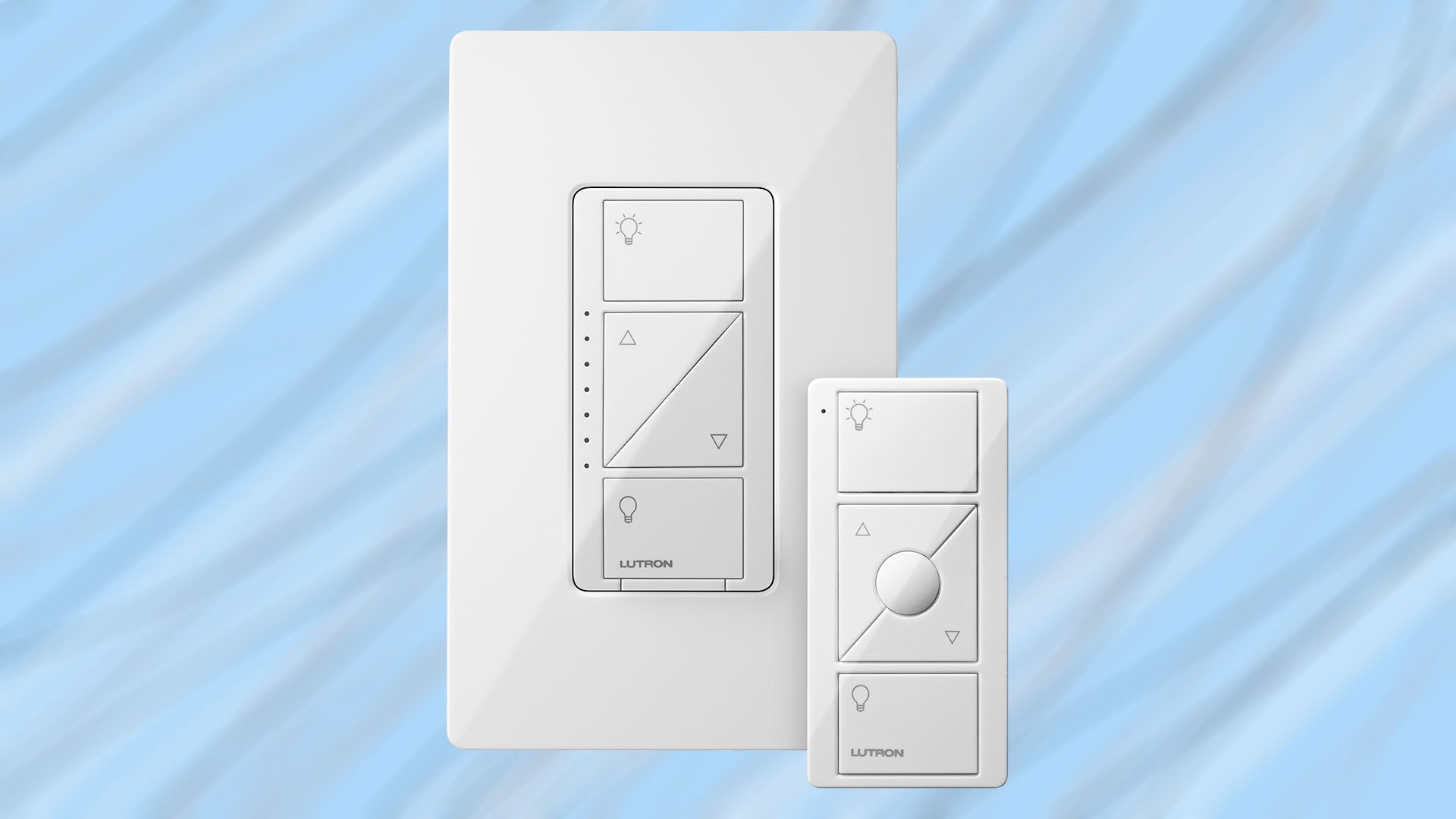Introduction
Welcome to the world of advanced lighting control with smart light switches. With the rapid advancement of technology, traditional light switches are being replaced with smart alternatives that offer greater convenience, energy efficiency, and connectivity. If you’re tired of manually flipping switches, want more control over your lighting, or are interested in building a smart home ecosystem, smart light switches are the perfect solution for you.
But what exactly are smart light switches? These innovative devices integrate seamlessly into your existing electrical wiring, allowing you to control your lights remotely using smartphone apps or voice commands. They offer a multitude of features and benefits that can enhance your everyday life.
In this article, we will dive into the world of smart light switches, exploring their benefits, different types available, key features to consider when choosing one, installation and setup process, integration with voice assistants and smart home systems, as well as potential drawbacks. By the end, you’ll have a solid understanding of how smart light switches can transform your home lighting experience.
So, if you’re ready to embark on a journey to revolutionize your lighting control, let’s explore the world of smart light switches and discover how they can elevate your home to the next level.
What are Smart Light Switches?
Smart light switches are intelligent devices that allow you to control your lights remotely using a smartphone, tablet, or voice commands. Unlike traditional light switches that require physical interaction, smart light switches provide a convenient and customizable way to manage your home’s lighting.
These switches often replace existing traditional switches and connect directly to your home’s electrical system. They come equipped with wireless capabilities such as Wi-Fi or Bluetooth, enabling them to communicate with other devices and be controlled remotely through dedicated mobile apps or integrated voice assistants like Amazon Alexa or Google Assistant.
Smart light switches offer a range of features and benefits that can enhance your lighting experience. You can easily turn lights on or off even when you’re away from home, create schedules to automate lighting based on your preferences or daily routine, and even dim or adjust the color temperature of compatible bulbs.
Additionally, smart light switches can be integrated into a larger smart home ecosystem, allowing you to control not just lighting but also other connected devices such as thermostats, security systems, or entertainment systems, all from a single app or voice-controlled hub.
Many smart light switches also offer advanced features like motion sensing, which can automatically turn lights on or off based on movement in a room, or energy monitoring, providing real-time insights into your energy consumption.
Overall, smart light switches provide a seamless and intuitive way to control your lighting, offering convenience, energy efficiency, and customization to suit your needs and lifestyle.
Benefits of Smart Light Switches
Smart light switches offer a plethora of benefits that can greatly enhance your home lighting experience. Here are some of the key advantages:
- Convenience: One of the primary benefits of smart light switches is the convenience they offer. With just a few taps on your smartphone or through voice commands, you can easily control your lights from anywhere in your home or even when you’re away. No more fumbling for switches or leaving lights on when you’re not home.
- Energy Efficiency: Smart light switches can contribute to energy savings. With features like scheduling and automation, you can set specific times for lights to turn on and off, ensuring lights are not left on unnecessarily. You can also dim lights to reduce energy consumption, or use motion sensors to automatically turn off lights in unoccupied rooms.
- Customization and Ambiance: Smart light switches allow for a high level of customization. You can adjust the brightness or color temperature of compatible bulbs to create different moods and atmospheres in your home. Whether you want bright task lighting for work or cozy warm lighting for relaxation, smart light switches give you the flexibility to adapt the lighting to your desired ambiance.
- Hands-Free Control: Integration with voice assistants like Amazon Alexa or Google Assistant allows for convenient hands-free control of your lights. Simply use voice commands to turn lights on or off, dim them, or even change colors. This feature can be particularly helpful when your hands are full or when you’re unable to reach a switch.
- Enhanced Security: Smart light switches can enhance home security by simulating occupancy when you’re away. By setting up lighting schedules or using randomization features, you can create the illusion that someone is home, deterring potential intruders. Additionally, remote access allows you to check and control your lights from anywhere, providing peace of mind.
These are just a few of the many benefits that smart light switches can offer. From convenience and energy efficiency to customization and enhanced security, these intelligent devices add a new level of functionality to your home lighting system.
Types of Smart Light Switches
There are several types of smart light switches available to suit different home setups and personal preferences. Here are some of the most common types:
- Single-Pole Switch: The single-pole switch is the most basic type of smart light switch. It controls a single lighting fixture or set of lights from a single location. These switches are commonly found in bedrooms, living rooms, or other areas where a single switch controls the lighting.
- Three-Way Switch: A three-way switch is used when multiple switches control a single lighting fixture or set of lights. These switches are often used in hallways, staircases, or larger rooms. When choosing a smart three-way switch, make sure it is compatible with the existing switch setup.
- Dimmer Switch: Dimmer switches allow you to adjust the brightness of your lights. They are perfect for creating different lighting atmospheres or reducing energy consumption. Smart dimmer switches offer advanced features such as remote control and scheduling, allowing you to customize and automate your lighting preferences.
- Toggle Switch: Toggle switches have a traditional flip switch design, similar to standard light switches. These switches provide a familiar feel while offering smart functionality. They are available in single-pole or three-way configurations.
- Multifunction Switch: Multifunction switches combine the features of a regular switch with additional controls such as fan control, thermostat control, or even built-in voice assistants. These switches offer a centralized solution for controlling multiple devices or integrating with larger smart home systems.
It’s important to note that not all smart light switches require a neutral wire for installation. Some switches, known as “no-neutral switches,” utilize alternative methods to power the smart features. However, these switches may have limitations on compatibility and functionality, so be sure to check the requirements of your specific switch and electrical setup.
When choosing a smart light switch, consider your specific needs, the type of switch currently installed, and the level of control and functionality you desire. It’s also crucial to ensure compatibility with your existing bulbs and smart home ecosystem, if applicable.
By understanding the different types of smart light switches available, you can select the one that best fits your requirements and enjoy seamless control of your home lighting.
Features to Consider When Choosing a Smart Light Switch
When selecting a smart light switch for your home, there are several important features to consider. These features will determine the functionality, compatibility, and convenience of the switch. Here are some key factors to keep in mind:
- Compatibility: Ensure that the smart light switch is compatible with your existing wiring and electrical setup. Some switches require a neutral wire, while others are designed for specific switch configurations or bulb types. It’s important to check the compatibility requirements before making a purchase.
- Connectivity: Consider the connectivity options of the smart light switch. Most switches use Wi-Fi or Bluetooth to connect to your home network, allowing for remote control via smartphone apps or voice assistants. Make sure the switch’s connectivity method aligns with your preferences and existing smart home ecosystem, if applicable.
- App and Voice Control: Look for a smart light switch that offers an intuitive and user-friendly mobile app. The app should provide easy setup, scheduling options, and customization features. Additionally, check if the switch is compatible with popular voice assistants like Amazon Alexa or Google Assistant for convenient hands-free control.
- Dimming and Color Control: If you desire the ability to dim your lights or change their color, opt for a smart light switch that supports these features. Not all switches are compatible with dimmable or color-changing bulbs, so check the switch’s specifications to ensure compatibility.
- Automation and Scheduling: Automation capabilities can greatly enhance your smart lighting experience. Look for switches that offer advanced scheduling features, allowing you to create custom lighting routines based on time, day, or sunrise/sunset. This enables you to automate your lighting preferences and save energy.
- Energy Monitoring: Some smart light switches include energy monitoring functionality, providing real-time data on your electricity consumption. This feature allows you to track and analyze your lighting usage, ensuring energy efficiency and potentially saving on electricity bills.
- Design and Aesthetics: Consider the design and aesthetics of the smart light switch. It should blend seamlessly with your existing home decor and switch plate covers. Some switches offer interchangeable faceplates in various colors or finishes to match your style.
- Brand and Customer Support: Take into account the reputation of the brand and the level of customer support they provide. Look for switches from reputable manufacturers known for their quality and reliability. Additionally, check for warranties or guarantees that offer peace of mind.
By considering these features when choosing a smart light switch, you can ensure that you make an informed decision and select a switch that meets your specific needs and preferences. Remember to review product specifications and customer reviews to further guide your choice and ensure a seamless and satisfying lighting control experience.
How Do Smart Light Switches Work?
Smart light switches utilize advanced technology to provide remote control and automation capabilities for your home lighting. Here’s a breakdown of how these intelligent devices work:
1. Installation: Smart light switches are installed in place of traditional light switches, connecting directly to your home’s electrical wiring. It’s important to follow the installation instructions provided with the switch or consult a professional electrician to ensure safe and proper installation.
2. Wireless Connectivity: Once installed, smart light switches utilize wireless connectivity, usually Wi-Fi or Bluetooth, to communicate with other devices. This enables you to control the switches remotely using a dedicated mobile app or voice commands through compatible voice assistants.
3. Mobile Apps: Smart light switches typically come with their own mobile apps that allow you to control and manage your lights from your smartphone or tablet. These apps provide a user-friendly interface, allowing you to turn lights on or off, adjust brightness, set schedules, and create automation rules based on your preferences.
4. Voice Control: Many smart light switches are compatible with popular voice assistants such as Amazon Alexa or Google Assistant. This integration allows you to control your lights using simple voice commands. For example, you can say “Alexa, turn on the living room lights” to activate the switch connected to your living room lighting.
5. Automation: Smart light switches offer automation capabilities to make your lighting more convenient and efficient. Through the mobile app or compatible smart home platforms, you can schedule your lights to turn on or off at specific times, create custom lighting scenes, or automate lighting based on motion sensors or occupancy detection.
6. Integration with other Devices: Smart light switches can be integrated into larger smart home ecosystems, allowing you to control your lights alongside other connected devices. They can be linked with thermostats, security systems, or entertainment systems, enabling synchronized control and customized automations.
7. Remote Access: With smart light switches, you can easily control your lights even when you’re away from home. As long as you have an internet connection, you can use the mobile app or voice commands to turn lights on or off, offering convenience, security, and energy savings.
Overall, smart light switches use a combination of electrical wiring, wireless connectivity, mobile apps, and voice assistants to provide seamless and intuitive control over your home lighting. By leveraging these technologies, you can enjoy the convenience, energy efficiency, and customizable features that smart light switches have to offer.
Installing and Setting Up a Smart Light Switch
Installing and setting up a smart light switch is a straightforward process that can be done by following a few simple steps. Here’s a guide to help you install and set up your smart light switch:
1. Turn off Power: Before starting any electrical work, turn off the power supply to the switch at the circuit breaker. This ensures your safety during the installation process.
2. Remove Existing Switch: Remove the cover plate of the existing switch, and then unscrew and disconnect the wires from the switch. Take note of the wire connections, as you’ll need this information for the installation of the smart light switch.
3. Connect Smart Switch: Connect the wires from the smart light switch to the corresponding wires in the electrical box. Typically, you will have wires for the line (hot), load (to the lights), neutral (depending on the switch), and ground. Follow the provided instructions or consult a professional electrician if you are unsure.
4. Secure the Switch: Once the wires are securely connected, carefully tuck the wires back into the electrical box, ensuring they are not pinched or touching any other wires. Attach the smart switch to the box using the provided screws.
5. Replace Cover Plate: Place the cover plate back onto the switch and secure it with the screws provided. Make sure the plate is flush with the wall surface.
6. Turn on Power: After securely installing the smart light switch, turn the power back on at the circuit breaker. The switch should power on and be ready for setup.
7. Download Mobile App: Download the mobile app associated with your smart light switch from the App Store or Google Play Store. Ensure that the app is compatible with your device’s operating system.
8. Create an Account: Open the app and create an account, if necessary. This account will allow you to control and manage your smart light switch remotely.
9. Connect the Switch: Follow the instructions in the app to connect your smart light switch to your home network. This usually involves connecting to the switch’s Wi-Fi network, entering your home Wi-Fi credentials, and waiting for the app to establish a connection.
10. Complete the Setup: Once the connection is established, the app will guide you through the final steps of setup. This may include naming the switch, setting up schedules or automation rules, and customizing the switch’s settings according to your preferences.
11. Test and Enjoy: Test the functionality of your smart light switch by using the app or voice commands to control your lights. Make sure you can turn the lights on and off, adjust the dimming, and access all the features offered by the switch.
Remember to carefully follow the installation instructions provided with your specific smart light switch. If you are uncertain about any step, it is advised to seek the assistance of a professional electrician to ensure a safe and proper installation.
Controlling Smart Light Switches with Voice Assistants
One of the most convenient and hands-free ways to control your smart light switches is through voice assistants. Voice assistants like Amazon Alexa, Google Assistant, or Apple Siri can be integrated with your smart light switches, allowing for easy and intuitive control using voice commands. Here’s how you can control your smart light switches with voice assistants:
1. Set up your Voice Assistant: Begin by setting up your preferred voice assistant, such as Amazon Alexa or Google Assistant. Follow the instructions provided by the voice assistant’s mobile app or website to connect and configure it with your smart home devices.
2. Discover Devices: Using the voice assistant app or voice commands, initiate a device discovery process. This will enable the voice assistant to identify and connect with the compatible smart light switches in your home.
3. Naming and Grouping: Assign unique names to your smart light switches within the voice assistant’s app or settings. This will make it easier to differentiate between different switches when issuing voice commands. You can also group multiple switches together for simultaneous control, such as controlling lights in a particular room or area.
4. Voice Commands: Once the setup is complete, you can now control your smart light switches by simply using voice commands. For example, with Amazon Alexa, you can say, “Alexa, turn on the living room lights” or “Alexa, dim the bedroom lights to 50%”. Similarly, with Google Assistant, you can say, “Hey Google, turn off the kitchen lights” or “Hey Google, set the dining room lights to blue”.
5. Scene Creation: Voice assistants also allow you to create custom scenes or routines that can control multiple smart devices simultaneously. For example, you can create a “Movie Time” scene that dims the lights, closes the blinds, and turns on the TV, all with a single voice command.
6. Schedules and Automations: Utilize the voice assistant’s app or settings to schedule and automate your smart light switches. You can set up routines that turn lights on or off at specific times, or even create automation rules based on sensor inputs or specific events.
7. Enjoy the Convenience: Once your smart light switches are connected to your voice assistant, you can enjoy the convenience of controlling your lights with simple voice commands. Whether you are in another room or away from home, you can easily turn the lights on or off, adjust the brightness, or activate specific scenes using just your voice.
It’s important to note that the specific voice commands and capabilities may vary depending on the voice assistant and the compatibility of your smart light switches. Refer to the documentation and support resources provided by the voice assistant and the smart light switch manufacturer for more detailed instructions.
Controlling your smart light switches with voice assistants adds a new level of ease and convenience to your smart home setup. Whether you have a single light switch or multiple switches throughout your home, voice control offers a seamless and hands-free alternative to traditional methods of lighting control.
Integrating Smart Light Switches into a Smart Home System
Integrating smart light switches into a smart home system allows for a more comprehensive and seamless control of your home’s devices and automation. By connecting your smart light switches with other compatible devices, you can create customized scenarios and streamline your smart home experience. Here’s how to integrate smart light switches into a smart home system:
1. Select a Smart Home Hub: Start by choosing a smart home hub or controller that acts as the central command center for all your smart devices. Popular options include hubs like Samsung SmartThings, Google Nest Hub, or Amazon Echo Plus. These hubs support various smart protocols and provide a unified control interface.
2. Connect the Smart Hub: Follow the instructions provided by the smart hub manufacturer to set up and connect the hub to your home network. This typically involves connecting the hub to power and configuring it using a dedicated app.
3. Discover Devices: Using the smart hub’s app or interface, initiate a device discovery process to search and identify compatible smart light switches in your home. The hub will establish a connection with the switches and allow for centralized control.
4. Grouping and Customization: Once the smart light switches are discovered, you can group them together with other devices in the smart home system. For example, you can create a “Living Room” group that includes the smart light switch, smart speakers, and other connected devices in that specific area.
5. Create Scenarios and Automations: With the smart hub, you can create custom scenarios or automations that involve your smart light switches. For example, you can have the lights turn on automatically when motion is detected in a certain area, or have them gradually dim in the evening to create a relaxing ambiance.
6. Control via App or Voice Commands: Once integrated, you can control your smart light switches through the smart home hub’s app or interface. This provides a centralized control point for all your devices, allowing you to turn lights on or off, adjust brightness, or activate custom scenes with ease. You can also use voice commands through voice assistants connected to the hub, such as Amazon Alexa or Google Assistant.
7. Expand and Customize: As your smart home system grows, you can continue to add more smart devices and integrate them with your smart light switches. This allows for greater flexibility and customization in creating unique scenarios and automations to suit your lifestyle.
It’s important to ensure compatibility between your smart light switches and the chosen smart home hub or controller. Some devices may require specific protocols or standards, such as Zigbee or Z-Wave, so make sure the hub supports the required protocols.
By integrating your smart light switches into a smart home system, you can enjoy a seamless and interconnected experience. The ability to control your lights alongside other devices in your home provides a more holistic approach to home automation and enhances the overall convenience and efficiency of your smart home setup.
Potential Drawbacks of Smart Light Switches
While smart light switches offer numerous benefits, it’s important to consider some potential drawbacks before incorporating them into your home. Here are a few factors to keep in mind:
- Compatibility: Smart light switches may require specific wiring configurations or compatibility with certain lighting fixtures or bulbs. It’s essential to ensure compatibility with your existing electrical setup before making a purchase.
- Installation Complexity: Installing smart light switches typically requires basic electrical knowledge. If you’re not comfortable working with electrical wiring, it’s recommended to hire a professional electrician for proper installation.
- Dependency on Power: Smart light switches rely on a stable power supply to function properly. If there is a power outage or connectivity issues, you may lose remote control capabilities until power is restored.
- Reliance on Wireless Connectivity: Smart light switches require a stable wireless connection, such as Wi-Fi or Bluetooth, for remote control. If your home network experiences issues, it may affect the responsiveness and reliability of the switches.
- Complexity for Older Adults or Technologically Inexperienced Users: Smart light switches may present a challenge for older adults or those less familiar with technology. Setting up the switches and interacting with mobile apps or voice assistants may require some learning and adjustment.
- Cost Considerations: Smart light switches can be more expensive than traditional switches, particularly when outfitting an entire home. Additionally, if you already have compatible switches, replacing them can add to the overall cost.
- Privacy and Data Security: Connecting smart devices to your home network poses potential privacy and data security risks. It’s crucial to choose reputable brands and implement proper security measures to protect your personal information and ensure the safety of your network.
- Dependency on Smart Home Ecosystem: Some smart light switches require a dedicated smart home hub or a specific smart home ecosystem to function. This may limit compatibility if you have an existing smart home setup or plan to expand with devices from different manufacturers.
It’s important to weigh these potential drawbacks against the benefits when considering the integration of smart light switches into your home. Conduct thorough research, read product reviews, and carefully consider your specific needs and technological comfort level before making a decision.
By being aware of these potential drawbacks, you can make an informed choice about implementing smart light switches into your home and ensure that they align with your requirements and expectations.
Conclusion
Smart light switches offer a wide range of benefits and conveniences that can greatly enhance your home lighting experience. With the ability to control your lights remotely through mobile apps or voice commands, you can easily customize and automate your lighting according to your preferences and schedule. The convenience, energy efficiency, and versatility provided by smart light switches make them a valuable addition to any smart home ecosystem.
From the initial installation and setup process to integration with voice assistants and smart home hubs, smart light switches offer a seamless and intuitive way to control your home lighting. You can create custom scenes, schedules, and automation rules to suit your lifestyle and enhance the ambiance of your living spaces.
However, it’s important to consider potential drawbacks such as installation complexity, compatibility issues, and dependency on power and wireless connectivity. It’s crucial to ensure that your chosen smart light switches align with your electrical setup, technology proficiency, and specific needs.
In conclusion, smart light switches provide a modern and advanced solution for controlling and managing your home lighting. They offer increased convenience, energy efficiency, and customization options, elevating your everyday lighting experience. With careful consideration of the features, compatibility, and potential drawbacks, you can make an informed decision on incorporating smart light switches into your home and enjoy the benefits they bring.







